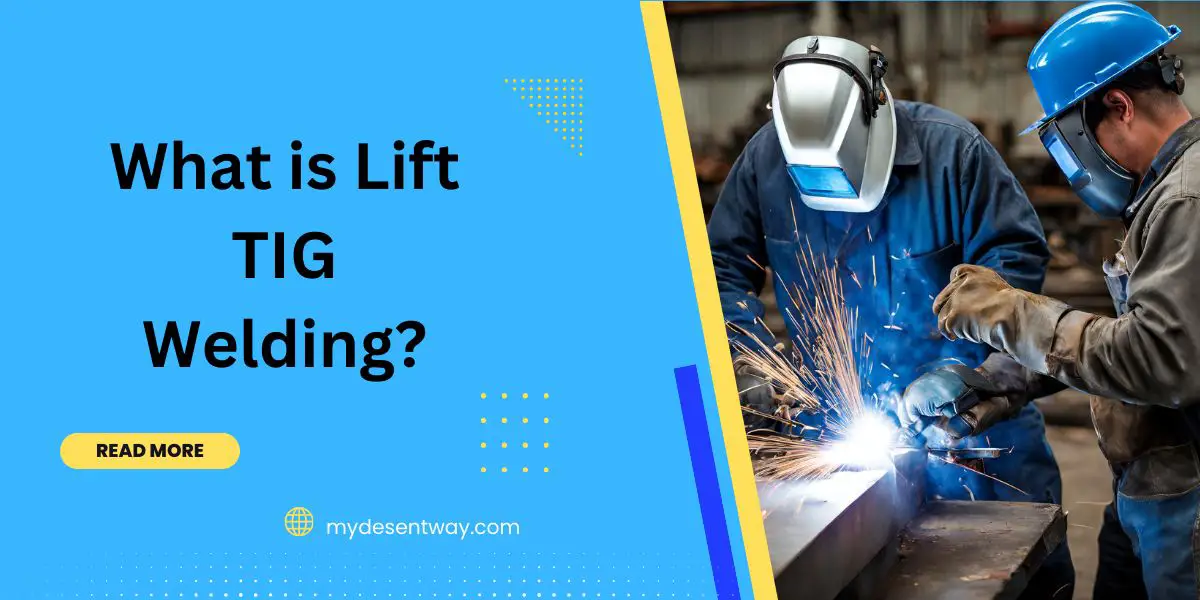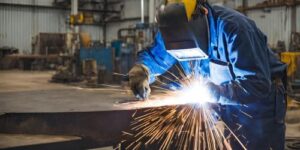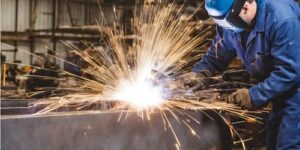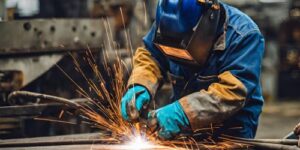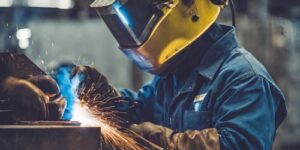Table of Contents
Tungsten Inert Gas (TIG) welding, also known as Gas Tungsten Arc Welding (GTAW), is a widely used welding process that offers high precision and quality welds. Among the various techniques in TIG welding, one popular method is Lift TIG welding. This article will delve into the intricacies of Lift TIG welding, its advantages, applications, and essential components.
Understanding What is Lift TIG Welding
Before diving into Lift TIG welding, it’s essential to understand the basics of TIG welding. In TIG welding, an electric arc is formed between the tungsten electrode and the workpiece. The electrode does not melt during the process, as it is non-consumable, and an inert gas (often argon) shields the weld area from atmospheric contamination. This results in high-quality, clean welds.
How to Lift TIG Welding Works
Lift TIG welding is similar to traditional TIG welding, with a slight variation in arc initiation. In Lift TIG welding, the tungsten electrode comes into contact with the workpiece, and as the electrode is lifted slightly, the electric arc is established. This lift-off action triggers the welding process, and the arc continues to burn, producing the necessary heat to melt the base metal and form the weld.
Advantages of Lift TIG Welding
Lift TIG welding offers several advantages over other welding methods. Firstly, it eliminates the need for a high-frequency start, reducing electromagnetic interference with nearby electronic equipment. This makes Lift TIG welding more suitable for sensitive environments.
Additionally, lift-off arc initiation reduces tungsten contamination, leading to cleaner welds and less post-weld cleaning. The process also enables better control, making it ideal for welding thin materials and intricate joints.
Key Components of a Lift TIG Welding Setup
To perform Lift TIG welding effectively, you need the following key components:
TIG Welding Torch
The TIG welding torch holds the tungsten electrode and provides the means to control the welding process. It allows the welder to precisely direct the arc and filler metal to create accurate welds.
Tungsten Electrode
The tungsten electrode is a non-consumable electrode used in TIG welding. It carries the electric current to the arc and must withstand high temperatures without melting.
Shielding Gas
Shielding gas, typically argon or a mixture of argon and helium, surrounds the welding area, preventing atmospheric contamination and ensuring a clean weld.
Filler Metal
In some cases, a filler metal is used to reinforce the weld joint and provide additional material. The filler metal should be compatible with the base metal being welded.
Setting Up the Lift TIG Welding Machine
Follow these steps to set up your TIG welding machine for Lift TIG welding:
- Select Lift TIG Mode: Make sure your welding machine is set to Lift TIG mode, which might be indicated by “Lift Start” or “Scratch Start” on the control panel.
- Prepare the Tungsten Electrode: Grind the tungsten electrode to a point and ensure it is securely installed in the torch.
- Gas Flow and Pressure: Set the appropriate gas flow rate and pressure to maintain a stable shielding gas coverage.
- Adjust Welding Parameters: Depending on the material and thickness, adjust the amperage and welding speed for optimal results.
Controlling the Arc
Lift TIG welding demands precise control of the arc. Here’s how you can achieve it:
- Lift and Pause: Lift the tungsten electrode quickly and pause for a split second to allow the arc to stabilize before starting the weld.
- Arc Length: Monitor and maintain a consistent arc length to avoid tungsten contamination and achieve a stable arc.
Safety Measures for Lift TIG Welding
Safety is paramount in any welding process, including Lift TIG welding. Here are some essential safety measures to follow:
- Always wear appropriate personal protective equipment (PPE), such as welding helmets, gloves, and flame-resistant clothing.
- Ensure proper ventilation in the workspace to avoid inhaling welding fumes.
- Keep a fire extinguisher nearby to handle any potential welding-related fires.
- Inspect welding equipment regularly for any damage or malfunction before use.
Differences Between Lift TIG Welding and High-Frequency TIG Welding
One notable difference between Lift TIG welding and High-Frequency TIG welding is the way the arc is initiated. As discussed earlier, Lift TIG welding uses a contact start, while High-Frequency TIG welding employs a high-frequency spark to initiate the arc. High-frequency TIG welding is preferred for thicker materials and situations where arc starting may be challenging.
Common Applications of Lift TIG Welding
Lift TIG welding finds application in various industries due to its precision and cleanliness. Some common applications include:
- Aerospace and aviation industries for welding aircraft components.
- Automotive industry for welding exhaust systems and fuel tanks.
- Food and beverage industry for welding stainless steel equipment.
- Artistic and decorative metalwork for intricate designs.
Tips for Successful Lift TIG Welding
To achieve high-quality welds with Lift TIG welding, consider the following tips:
- Practice proper welding techniques to maintain control over the arc and filler metal.
- Maintain the correct torch angle and travel speed for consistent welds.
- Ensure the workpiece is clean and free from any contaminants to prevent weld defects.
- Use the appropriate tungsten electrode and shielding gas for the material being welded.
Troubleshooting and Common Mistakes in Lift TIG Welding
Even skilled welders encounter challenges in Lift TIG welding. Some common issues and troubleshooting tips include:
- Tungsten Contamination: Ensure the tungsten electrode is clean and properly ground.
- Incomplete Fusion: Increase the welding current and slow down the travel speed.
- Porosity: Check for gas leaks and use the right flow rate for shielding gas.
Maintenance and Care for Lift TIG Welding Equipment
Regular maintenance of your Lift TIG welding equipment is essential for consistent performance and longevity. Follow the manufacturer’s guidelines for cleaning and inspecting the torch, gas lines, and power source. Replace any damaged or worn-out components promptly.
The TIG Lift Welder Explained
A TIG lift welder is a welding machine specifically designed for Lift TIG welding. It provides the necessary power and control to initiate and maintain the electric arc. This type of welder is popular among both beginners and experienced welders due to its simplicity and ease of use.
Does Lift TIG Require Gas?
Yes, Lift TIG welding requires the use of a shielding gas, typically argon. The shielding gas serves multiple purposes:
- Protection: It creates a protective atmosphere around the weld area, preventing the molten metal from reacting with the surrounding air and forming unwanted impurities.
- Stability: The gas ensures a stable arc and a clean weld bead, resulting in high-quality welds.
- Cooling: The shielding gas cools down the tungsten electrode, increasing its longevity and preventing overheating.
The Difference Between HF TIG and Lift TIG
HF TIG (High-Frequency TIG) welding and Lift TIG welding are two different approaches to starting the electric arc in TIG welding. Here’s how they differ:
- Arc Initiation: In HF TIG welding, the high-frequency start creates an electrical discharge between the electrode and workpiece to initiate the arc without physical contact. On the other hand, Lift TIG welding requires the operator to touch the electrode to the workpiece and then lift it to start the arc.
- Complexity: HF TIG welding machines are more complex and usually more expensive due to the added high-frequency circuitry. Lift TIG welders, being simpler, are generally more affordable and user-friendly.
- Electrode Wear: HF TIG welding tends to cause faster electrode wear compared to Lift TIG welding, as the high-frequency start erodes the electrode tip.
- Applications: Both welding techniques are used for various applications, but HF TIG welding is often preferred for critical welds on exotic materials, while Lift TIG welding is popular for everyday welding tasks.
Lift TIG Welding vs. Stick Welding
Lift TIG welding and stick welding (Shielded Metal Arc Welding) are two distinct welding processes. While both are used for joining metals, they differ in terms of electrode types, welding speed, weld quality, and applications. Lift TIG welding is preferred for precision welding and applications requiring higher quality welds, whereas stick welding is more versatile and suitable for outdoor and heavy-duty welding
Benefits of Lift TIG Welding
Lift TIG welding offers several advantages that make it a preferred choice for many welders:
- Cost-Effective: Lift TIG welders are typically more budget-friendly than HF TIG welders, making them accessible to a wider range of welding enthusiasts.
- Simple Operation: The process of lift TIG welding is straightforward, making it ideal for beginners or those transitioning from other welding methods.
- Suitable for Various Materials: Lift TIG welding can be used on a wide range of materials, including stainless steel, carbon steel, copper, and more.
- Less Electrode Wear: With no high-frequency start, the tungsten electrode tends to last longer, reducing the frequency of replacements.
- Safer: Some welders prefer Lift TIG welding as it produces less electromagnetic interference compared to HF TIG, making it a safer option in certain environments.
Practice and Refinement
Regular Practice
As with any skill, practice is crucial to mastering Lift TIG welding. Dedicate time to regular practice and experiment with various materials and joint configurations.
Seek Expert Guidance
Consider joining welding workshops or seeking guidance from experienced welders to receive valuable tips and feedback.
Basics of Lift TIG Welding
video by ESAB
Conclusion
Lift TIG welding offers a reliable and versatile welding solution for various industries. Its contact start and minimal tungsten contamination make it ideal for precision work and critical applications.
By following best practices, welders can harness the full potential of Lift TIG welding and produce high-quality welds with ease.
Understanding the differences between Lift TIG and HF TIG welding can help you choose the best method for your specific welding projects, ensuring clean and precise welds every time. So, why not give Lift TIG welding a try and explore its benefits firsthand? Happy welding!
FAQs
Is Lift TIG welding suitable for all materials?
Lift TIG welding is most commonly used for non-ferrous metals like aluminum and stainless steel. It can also be used on ferrous materials but requires specialized techniques and expertise.
Can I perform Lift TIG welding outdoors?
Yes, Lift TIG welding can be done outdoors, but extra care should be taken to protect the welding area from wind and drafts that can affect the shielding gas coverage.
Is Lift TIG welding challenging for beginners?
While Lift TIG welding requires some skill and practice, beginners can learn the technique with dedication and proper guidance from experienced welders.
Can I use Lift TIG welding for thick materials?
Lift TIG welding is more suitable for thin materials. For thicker materials, high-frequency TIG welding or other processes may be preferred.
What is the main advantage of lift-off arc initiation?
Lift-off arc initiation reduces tungsten contamination, resulting in cleaner welds and less post-weld cleanup. It also minimizes electromagnetic interference in sensitive environments.
